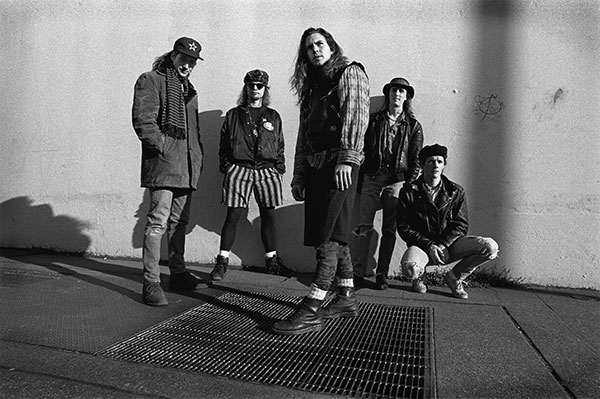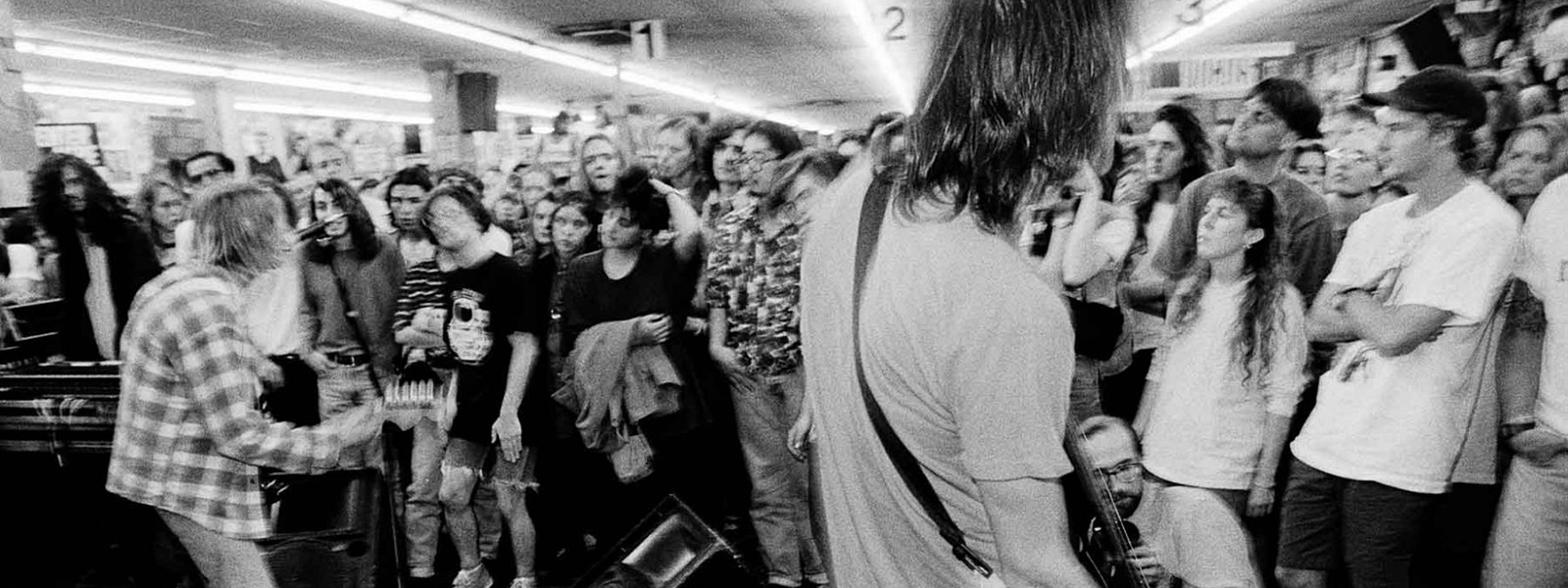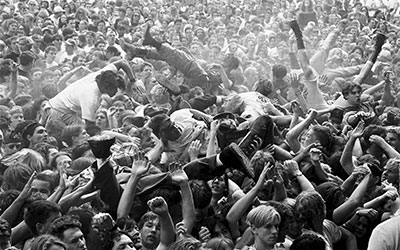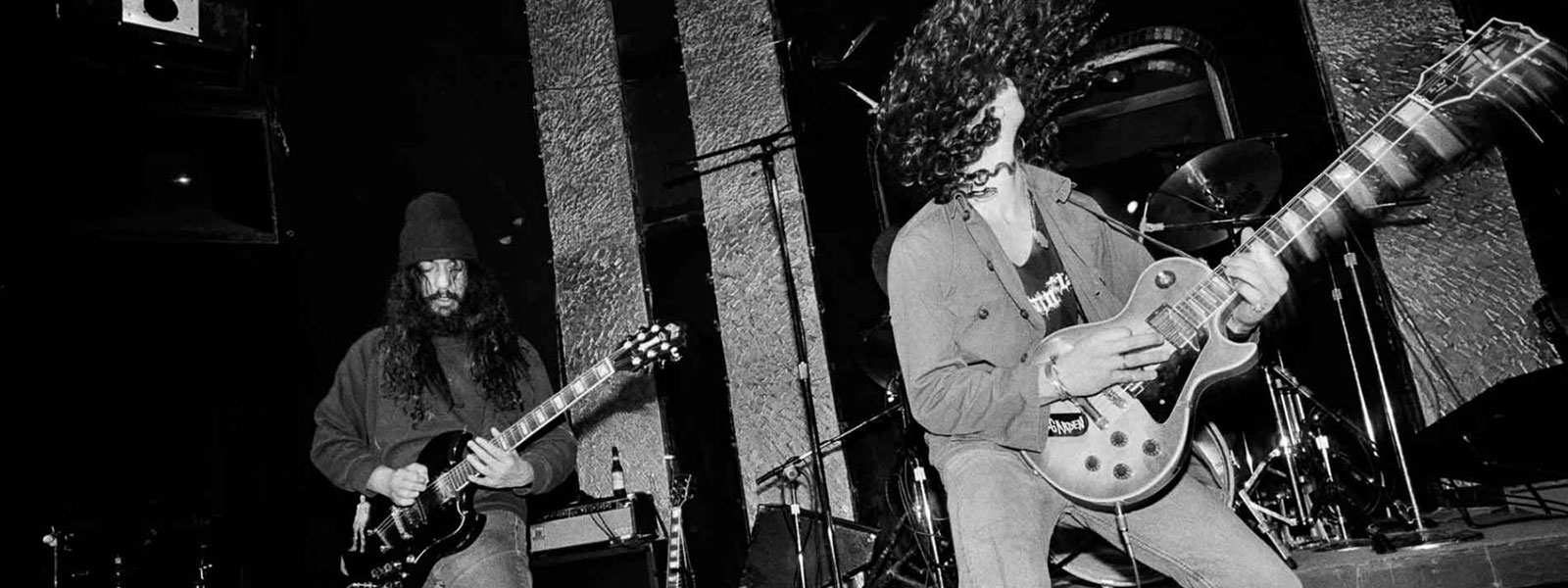The ugly truth: 10 things you need to know about the Seattle music scene
Once "grunge" hit the big time, it took a life of its own, and liberties were taken with the truth about Seattle and the so-called "grunge" scene. We attempt to correct the record
The breakout of Nevermind, seen by most as the defining moment when "grunge" hit the big time was over 25 years ago. It was around this time that a narrative was created about Seattle, about its vibrant music scene and the environment that allowed such a scene to grow. Liberties were taken with the truth, and the media was complicit in stretching the truth or building up a hype that was in very few ways indicative of what really went on in Seattle.
Today, through a number of solid books on the history of the music scene, the media has attempted to atone for its excessive hype of the northwest music scene. But many untruths about the scene still circulate, as some fans prefer to be nostalgic over a scene that didn't exist the way they want it to.
This article will attempt to set the record straight on many aspects of that scene.
Note: Some of these things should be obvious, but these narratives still exist among music fans.
The Seattle “scene” was never as big as it was portrayed in the media
By 1992, Nirvana and Pearl Jam and Alice in Chains and Soundgarden were all global stars. With four huge bands all hailing from the same city, the media went wild, calling Seattle the “music capital of the world,” home of the “most vibrant music scene” around, among other things.
This would be news to people who lived in Seattle.
Before the grunge hype exploded, the locals knew of Seattle as a place with just a few venues, where bands sometimes played to miniscule crowds or even rent out banquet halls because there weren’t enough places to play. It was a place where shows or house parties had a police presence and the City was passing things like the Teen Dance Ordinance to make shows less accessible to kids. The infamous Sub Pop Lame Fest at the 1,400 capacity Moore Theatre in June 1989 was initially mocked – because there was no way that a show with three local bands could sell out a venue that large. While the show did exceed all expectations, it demonstrates the lack of confidence in the support of rock music in Seattle, even with three future major label stars.
Kurt Danielson, bassist for the seminal Seattle band TAD, had this to say, as quoted in Clark Humphrey’s Loser: “The whole Seattle ‘scene’ is a fabrication constructed by the media… There never really was a scene there in the first place. What there was, was Sub Pop Records and a few bands rediscovering the music they grew up with, heavy rock… there was no scene, just a half dozen bands that played for each other.”
The music landscape in Seattle did grow and more local fans did buy into their city as a music hub. However, it was never the mecca that was portrayed.
Very few bands from the Seattle scene actually made it big
It’s been said that grunge and Seattle made it big, but the majority of the commercial success went mainly to four bands – Nirvana, Pearl Jam, Soundgarden and Alice in Chains. Bands like Mudhoney, Screaming Trees and the Posies did have moderate commercial success, but the majority of bands that were signed to major labels did not have fare too well.
TAD, Seaweed, Hammerbox, Pond, Satchel, 7 Year Bitch and the Melvins were among the bands to get signed to majors but they all failed to make their breakthrough, lost in a numbers game. In fact, troubles with major labels actually caused the premature death of a number of bands. One could argue the Seattle grunge hype machine actually killed more bands than it brought up. (Hammerbox, Flop, TAD and 7 Year Bitch are among the bands that broke up partly due to label issues.)
The big four bands certainly deserved their success, but it could have spread to a number of bands in the region. It was something that the superstars would feel guilty about.
What was called the “Seattle” scene was really a group of smaller sub-scenes across the region that weren't necessarily related
The Pacific Northwest had a number of influential scenes, though it never was as connected as some made it out to be. There were independent scenes in Seattle, Portland and Olympia (as well as Bellingham, Tacoma and other cities) that had little to do with each other. Bands associated with the Olympia riot grrrl movement or K Records-indie scene had very little to do with the Sub Pop scene and even less to do with the “big” bands of Seattle, with the one exception being Kurt Cobain and his connection to the Olympia scene.
Musicians from the region have repeatedly pointed out their frustrations with being all lumped together, as if they all were friends or fans of each other’s bands. Bands like Beat Happening and Soundgarden, for example, had very little in common in terms of sound, philosophy or ambitions.
A sidenote: Nirvana wasn’t really a “Seattle” band. They formed in Aberdeen, as most people know, but when they decided to move west, they went to Olympia, not Seattle. In fact, Kurt Cobain lived in Los Angeles before he ever had a Seattle address. But it was always easier to bundle everyone up as part of the “Seattle” scene.
Many bands found more success abroad than in America or even in their hometowns
In the Cameron Crowe film Singles, Cliff Poncier, the frontman of the fictional Seattle band Citizen Dick lamented that their record wasn’t doing too well in Seattle, but at least it was hitting it big in Belgium and Italy. Many real bands indeed did find foreign audiences to be more amenable to them than US crowds were.
The Walkabouts were perhaps the best example of this. Despite releasing critically-acclaimed albums on both PopLlama and Sub Pop, the band really never caught hold in Seattle or the U.S., but they found a big market overseas in Europe. In fact, after 1992, they were mostly touring and releasing albums in Europe, where they found their most enthusiastic audiences. Even MTV was putting their videos into rotation.
Charles Peterson also noted that when Sub Pop sent four of their current acts to Japan in 1993, that they received “rock star treatment” in direct contrast of their anonymity in the United States. The Fastbacks and Young Fresh Fellows were two such bands who did very well in Japan.
Don't forget; Sub Pop founders Jon Poneman and Bruce Pavitt intentionally targeted the UK music press to help build hype for Seattle and Sub Pop – even with future heavyweights Nirvana, TAD and Mudhoney. They thought that going through the UK was the way to get their bands into the mainstream.
Grunge and Sub Pop were just one part of the northwest music scene
As the first label of Nirvana, Soundgarden and Mudhoney, Sub Pop become synonymous with Seattle and grunge. But while they were definitely the most known label of the region, they were far from the only important label. In Seattle proper, C/Z (Coffin Break, Gits, Seven Year Bitch, Hammerbox, Melvins), Empty (Gas Huffer, Crackerbash, Zip Gun, Girl Trouble) and PopLlama (Posies, Fastbacks, Young Fresh Fellows, Walkabouts) all carried a number of important and influential bands on their rosters. Outside of Seattle, Olympia’s K Records (Beat Happening, Some Velvet Sidewalk, godheadSilo, Modest Mouse) led the “underground revolution” and Kill Rock Stars carried a number of bands that became associated with the influential riot grrrl scene (Bikini Kill, Sleater-Kinney, Bratmobile).
During Sub Pop’s dark period of the late 90s, Up Records, led by former Sub Pop staffer Chris Takino, documented the burgeoning indie scene in the Pacific Northwest. Built to Spill, Modest Mouse, 764-HERO and Quasi were among the bands that released albums on Up Records, a label that stopped with Takino’s tragic death.
Sub Pop always had a tongue-in-cheek “world domination” type of attitude that some unsuspecting people bought into. And they continue to be the most successful indie label in Seattle today, though their roster is a lot different than it was in 1988. But by no means were they the only label worth following.
As for the music itself, it was always much more diverse than people give it credit for. Bands like the Posies, Walkabouts, Fastbacks, Sunny Day Real Estate, Presidents of the United State of America, Gas Huffer, Treepeople, Beat Happening, Girl Trouble or Pond all brought different things to the table. Even Sir Mix-A-Lot was from Seattle.
For whatever reasons, some fans and media would rather lump all these bands and sounds together than celebrate the incredible diversity of the pacific northwest. Bands that didn't fit in with the "grunge" thing were ignored.
“Grunge fashion” was never really a style thing in Seattle
One of the most ridiculous things to come from the grunge hype was the idea of “grunge fashion” that emanated from the thrift stores of Seattle. We all remember the look – old flannel shirts, longjohns and shorts, the stocking hats. Even today you get articles like this, giving you tips on how to find that “rugged chic look.”

Dressing like this was never cool in Seattle.
It was a look that was indeed common in the northwest, but it was more a look of utility rather than style. As Sonic Youth’s Thurston Moore noted – “that was just how they dressed; nobody had any ambitions to any mainstream visibility.”
But it did indeed take off nationwide as a new style, and Madison Avenue was a key part in this development. Fashion designer Marc Jacobs even released a “grunge” collection for clothing brand Perry Ellis. But in the early 1990s, whether you were in Des Moines, Iowa, Decatur, Georgia or Fresno, California, flannel shirts, ripped jeans, Doc Marten boots were EVERYWHERE. It was about this time, ironically, where Seattle folks started cutting their hair and buying different clothes.
Pearl Jam was initially hated by a lot of people in the Seattle scene
Pearl Jam became global superstars not long after Nirvana, but unlike Nirvana, not everyone in Seattle was excited about their success. Kurt Cobain famously called them (along with Alice in Chains) “corporate puppets” hopping on the alternative bandwagon. This view was not uncommon among other people in Seattle at the time.

It didn't happen right away, but Pearl Jam eventually won over most of their critics in Seattle.
Pearl Jam was looked unfavorably for several reasons: their perceived pursuit of stardom (going back to Gossard and Ament’s Mother Love Bone days), their “importing” of a lead singer from another city, as well as the band’s commercial-friendly sound. Jack Endino notes in Stephen Tow’s The Strangest Tribe that “the backlash was just a lot of people being upset that a band would so explicitly go for a stadium rock model.” People were more used to the non-commercial drive of a band like Mudhoney or the DIY ethos of a Beat Happening or Dead Moon. If a band did want to strive for success, they should do it in a more subtle way like Nirvana or Soundgarden, starting off on an indie label and focusing on building fan base locally before trying to make it big.
Pearl Jam would eventually win over many of the local skeptics, and even Kurt Cobain famously ended the (mostly one-sided) feud between the two bands. Their crusade against Ticketmaster, their heavy activity toward charitable causes, and their support for other musicians in the region helped endear Seattle to the band.
“Grunge” didn’t kill pop music
Much has been made of Nirvana’s Nevermind knocking off Michael Jackson off the top spot from the Billboard 200, as if it was a symbolic “changing of the guard.” But Dangerous still sold 35 million copies worldwide and spawned nine hit singles. It wasn’t exactly struggling to move units, before or after Nirvana broke.
Nirvana nor the wave of grunge acts around that time never really came close to killing pop music, and it never really tried. That was never really a goal of theirs to begin with. Many of the bands were in fact also fans of these pop acts. (Michael Jackson was even famously covered by Chris Cornell many years later.) Sure, alternative music was making its move. But pop music in general stayed popular then, and one only needs to turn on the radio now to see that it’s still going on strong now.
If “grunge” killed anything, it was hair metal, but that was a genre that was in its last throes anyway. Grunge just gave it one last shove off the cliff.
Seattle is over grunge
There is no more Nirvana, Pearl Jam or Soundgarden and Alice in Chains is only a shadow of what they once were, commercially speaking. Other smaller acts like Mudhoney, the Posies, the Supersuckers and Mark Lanegan soldier on. And bands like Seaweed, Hammerbox, Flop, Love Battery and even Green River and Temple of the Dog have reunited, albeit temporarily, to release music and/or play local shows to enthusiastic crowds. Like many other pop culture phenonenoms, there remains a high level of interest in the 80s and 90s grunge era.
The Seattle scene today remains as vibrant as ever, albeit through a more decentralized music scene and an array of music acts spanning many genres. The ultimate “grunge” label Sub Pop has actually been more successful today than it ever was during the grunge heyday, hitting it big on acts like the Shins, the Postal Service and the Head and the Heart, bands that would never be confused with the dirgy bands of yesteryear. Sub Pop moved on from “grunge” a long time ago, and so has most of the city’s music fans.
While the city of Seattle is certainly proud of its music history, it’s not living in the past. But the impact of the northwest rock explosion of the 1990s remains, even if most of the bands are history.
Grunge has become a nostalgia act – and it’s a good thing
Who would have guessed 20 years ago that we’d have TAD album re-issues, a Temple of the Dog reunion, films about Mudhoney or Girl Trouble, a number of really awesome books on grunge, or even a site like this discussing a pop culture phenomenon that ended over two decades ago? How is it that millennials are discovering the “forgotten” bands of the 80s/90s northwest region?
There’s a new wave of music fans who weren’t even born in 1989 or 1991 that are interested in this era. It's more than okay to get into the music now -- just make sure you get the story right!


